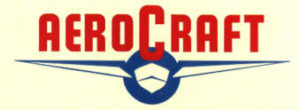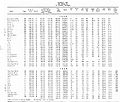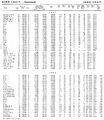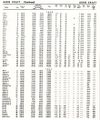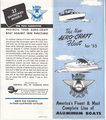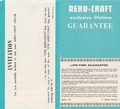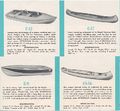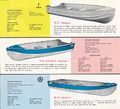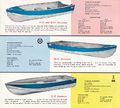Difference between revisions of "Aerocraft"
(added model info and fixed boats in use link) |
(added Aero-Line tidbit) |
||
| Line 10: | Line 10: | ||
By 1959 the firm was located at 400 Water Street in St. Charles, the same address as Harwill, Inc., its parent firm. By 1960, the firm utilized Universal Sports Corporation of New York City as its export manager. Staffing had increased to 100 males and 25 females by 1960. | By 1959 the firm was located at 400 Water Street in St. Charles, the same address as Harwill, Inc., its parent firm. By 1960, the firm utilized Universal Sports Corporation of New York City as its export manager. Staffing had increased to 100 males and 25 females by 1960. | ||
| + | |||
| + | A lower price series of 12' and 14' models were marketed as "Aero-Line" boats to distinguish them from the higher-priced Aero-Craft models. | ||
The firm apparently closed sometime after 1978. | The firm apparently closed sometime after 1978. | ||
Revision as of 03:27, 16 March 2013
A leading post-World War II producer of aluminum, outboard-powered recreational boats, Harwill, Inc., manufacturer of Aero-Craft boats, was a boat-building firm in St. Charles, Saginaw County, Michigan, established in 1946. A. S. Brennan was president of the firm; L. B. Harkins, vice-president and general manager; D. Wiltse, secretary and sales manager; and Leon Harkins, the treasurer and purchasing agent.
Among its diversified products were parachute packing tables for the U.S. Air Force in a contract awarded in about June 1951.
One source reported 60 males and 15 females working for the company in 1950. The company produced aluminum boats, toboggans, pontoons and custom metal work. H. M. Robins Company of Detroit was the export management company for the firm in 1950.
By 1955 the firm employed 75 males and 25 females for a workforce of 100 people.
By 1959 the firm was located at 400 Water Street in St. Charles, the same address as Harwill, Inc., its parent firm. By 1960, the firm utilized Universal Sports Corporation of New York City as its export manager. Staffing had increased to 100 males and 25 females by 1960.
A lower price series of 12' and 14' models were marketed as "Aero-Line" boats to distinguish them from the higher-priced Aero-Craft models.
The firm apparently closed sometime after 1978.
Aero Craft - More History
AeroCraft -- Harwill
By Andreas Jordahl Rhude 31 January 2002 Revised 02 May 2002
© Andreas Jordahl Rhude 2002
Harwill, Inc. got its start in February 1946 at Bay City, Michigan. The company was founded by brothers L.B. and Leon Harkins along with Douglas Wilste. L.B. was president and the two other men were vice presidents. The infant firm sought a small city for manufacturing operations and selected St. Charles, near Saginaw. The city offered use of the old waterworks facility at favorable lease terms. Harwill therefore had a location for their operations.
The company name HARWILL came from combining portions of the names HARkins and WILste. L.B Harkins had taken a course in aircraft sheet metal work in Detroit at the outset of World War II. He subsequently worked for Briggs Aircraft and later Dow Chemical in Bay City. At Dow he worked in their magnesium fabrication plant. After the war Dow began making magnesium boats. L.B. and Wilste claimed they could make a better boat at lower cost and this was their impetus for forming Harwill in 1946.
The first AeroCraft aluminum boats were made in June 1946 at St. Charles. The original boat constructed was a twelve-foot row-motor boat. Ten boats per week rolled off the assembly line by November. Orders came in at a much quicker rate than expected, so that by March 1947 they were building fifty boats per week with sixty workers on the payroll. That year they purchased an eight-acre plot on the outskirts of the city and constructed a new production facility. The first public stock offering occurred in 1948 when lack of working capital forced the owners to seek assistance. A number of St. Charles businessmen invested including A.S. Brennan who became president.
Some of the early products in addition to boats included experimental boats up to 27 feet in length for the Army; parachute packing tables; aluminum mess and card tables for the Navy; aluminum cabinets for Navy ships; and laundry tables for the Army Quartermaster Corp. One hundred were employed by the summer of 1953.
The company was originally formed to make plastic products, however the aluminum fabrication took over immediately. Aluminum boats were their first products. Ultimately they added a line of fiberglass boats to supplement the metal operations.
Harwill was purchased by Browning Arms Company in the spring of 1969 for a cash amount exceeding $2 million. The boat operation became the Browning Marine Division and all personnel were kept on the payroll. At that time, Harwill had 120,000 square feet of production space on 17 acres of land. 1968 sales amounted to $2,769,691.00 with after tax earnings of $91,692.00. Both L.B. and Leon Harwill were with the firm as was A.S. Brennan at the time of the sale to Browning. They remained with the new owners as managers.
One third of the workers at Browning Marine were layed off in early December 1973. They all came from the fiberglass production staff. Uncertainly in gasoline supplies had boat sales plummeting at the time, so production had to be cut. Browning wanted out of the boat-building field and closed the plant on 19 July 1974.
The Browning Marine Division was sold in August 1974 to Fuqua Industries, Inc. of Atlanta according to an announcement by J.J. Klein, general manager. The closure of the sale ended months of rumors of impending shut down of the boat works. Production on a limited basis began soon after the sale. The trade name Browning AeroCraft continued to be utilized by Fuqua. Browning AeroCraft was assigned to Fuqua’s subsidiary Signa Corporation.
On the second of February 1976 a fire destroyed a large portion of the St. Charles boat works. Estimated damages reached the $400,000.00 mark. Many of the boat molds were consumed by the conflagration.
At peak production the company was building 250 aluminum boats and 30-35 fiberglass boats each week.
In 1979 Signa moved AeroCraft production to their boat plant at Decatur, Indiana. Soon after, a group of local citizens rallied and established St. Charles Boatworks, Inc. with the intent of purchasing the abandoned AeroCraft facility. Over $125,000.00 was raised, however it was not sufficient to swing a deal. So the idea was abandoned and the funds returned to the investors.
The economic uncertainty of the late 1970s took its toll on Browning AeroCraft when she was closed down. A liquidation auction took place on 17 December 1979.
An interesting an ironic turn of events took place in March 1976. Fuqua agreed in principal to sell the Fuqua marine subsidiaries to Saul Padek. These assets included Thunderbird Products and Signa Corporation. Thunderbird made boats at several plants in the country and Signa owned the Browning AeroCraft operation at St. Charles. Padek was owner and president of Thompson Boat Company of Peshtigo, Wisconsin. The sale between Fuqua and Padek never materialized, however. In 1980 a new occupant took over the abandoned AeroCraft facility, Thompson Boat Company. Thompson went belly up in the summer of 1980, about a year after Padek sold out. Dale and David Anderson of Detroit purchased the Thompson assets and they moved the operation, lock, stock, and barrel, to St Charles. They moved into the former AeroCraft plant. Thompson continued to make their boats at St. Charles until about the year 2000.
To read more about the history of Thompson, see “The Thompsons and Their Boats” in Classic Boating magazine, September-October 1999, Issue Number 91, pages 10-15.
Sources: St. Charles (MI) Union Saginaw (MI) Valley News Peshtigo (WI) Times
AeroCraft Boat Owner's Website
Model Information
1949 Information
1955 Information
1958 Information
1960 Information
1961 Information
1962 Information
1963 Catalog
1964 Catalog
1967 Catalog
